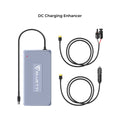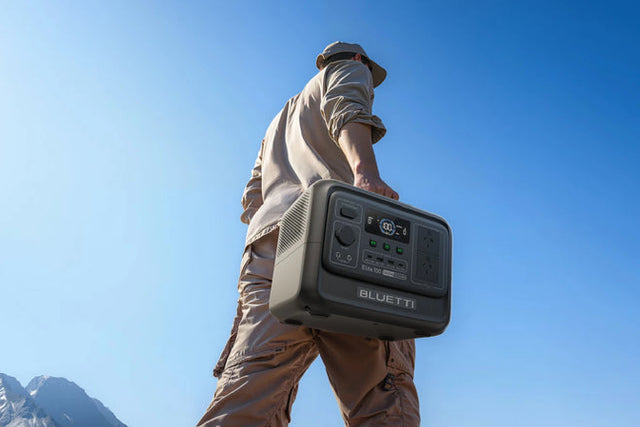In recent years, there has been a growing interest in whole home battery backup systems in Australia. With increasing concerns about climate change and the reliability of the national power grid, many homeowners are looking for ways to reduce their dependence on traditional energy sources and ensure a continuous supply of electricity for their household. However, the cost of implementing such a system can be a major barrier for many. In this article, we will explore the various factors that contribute to the cost of whole home battery backup systems in Australia and why it is important for homeowners to understand the financial implications of this investment.
I.Overview
In recent years, the concept of whole home battery backup has gained significant traction in the Australian market. With the increasing frequency of natural disasters and extreme weather events, homeowners are looking for ways to ensure uninterrupted power supply for their households. Whole home battery backup systems have emerged as a popular solution, offering homeowners the ability to store excess energy generated from their solar panels or grid electricity to power their homes during outages or high-demand periods. As the demand for battery backup systems continues to rise, it is important to discuss the cost implications for Australian households.
A. Explanation of Whole Home Battery Backup
A whole home battery backup system consists of a large battery storage unit, typically installed in a garage or outdoor space, connected to a home's electrical panel. The battery is charged either through excess energy generated by solar panels or by drawing from the grid during off-peak hours when electricity rates are lower. During a power outage or high-demand period, the battery can be used to power essential appliances and keep the lights on until power is restored.
B. Growing Demand for Battery Backup in Australia
The demand for battery backup systems in Australia has been steadily increasing in recent years. This can be attributed to the country's vulnerability to extreme weather events such as bushfires and storms, which can cause prolonged power outages. Additionally, with the rising cost of electricity, more and more households are turning to solar energy and battery storage as a cost-saving measure. According to a report by the Clean Energy Council, the number of battery installations in Australia increased by 20% in 2019 alone, showing a clear trend towards battery backup systems.
C. Importance of Discussing the Cost of Whole Home Battery Backup
While whole home battery backup systems offer a range of benefits to homeowners, the cost of installation and maintenance can be a significant deciding factor for many. As with any new technology, the cost of battery backup systems can vary greatly depending on factors such as battery capacity, brand, and installation. It is essential to have a clear understanding of the costs involved in order to make an informed decision and determine if it is a viable option for individual households.
In this article, we will delve into the various factors that contribute to the cost of whole home battery backup systems in Australia. We will also discuss the potential savings and benefits of investing in such a system, as well as the government incentives and rebates available to homeowners. By the end of this article, readers will have a comprehensive understanding of the cost implications of whole home battery backup systems and be better equipped to make an informed decision on whether it is a worthwhile investment for their homes.

II. Factors Affecting the Cost
In Australia, the cost of whole home battery backup systems can vary greatly depending on several factors. These factors include the technology used in the battery system, the size and capacity of the battery, the cost of installation, the location and accessibility of the home, as well as any potential government incentives and rebates.
A. Technology used in the battery systemThe technology used in a battery system can greatly impact the cost of a whole home battery backup. Currently, the most common types of battery technologies used in Australia are lead-acid, lithium-ion, and flow batteries. While lead-acid batteries are the most affordable option, they have a shorter lifespan and require more frequent maintenance. On the other hand, lithium-ion and flow batteries have a longer lifespan and require less maintenance, but they come at a higher cost.
B. Battery size and capacityThe size and capacity of the battery also play a significant role in determining the cost of a whole home battery backup. The size of the battery is determined by the amount of energy it can store, usually measured in kilowatt-hours (kWh). A larger battery with a higher capacity will have a higher cost compared to a smaller one with a lower capacity. Additionally, the size and capacity of the battery should be chosen based on the energy needs of the home, which can vary depending on the number of residents and their energy consumption habits.
C. Cost of installationThe cost of installation is another crucial factor that affects the overall cost of a whole home battery backup. The installation process involves mounting the battery, connecting it to the home's electrical system, and installing the necessary inverters and other equipment. The complexity of the installation process, as well as the time and labor involved, can significantly impact the cost. Additionally, the cost of hiring a professional installer or contractor can also vary depending on their experience, qualifications, and location.
D. Location and accessibilityThe location and accessibility of the home can also affect the cost of a whole home battery backup. Homes in remote or rural areas may face additional costs due to the logistics and transportation of the battery and equipment. On the other hand, homes in urban areas may have easier access, resulting in lower installation costs. Additionally, factors such as the condition of the home's electrical system and the need for any upgrades or modifications can also impact the cost.
E. Government incentives and rebatesLastly, the availability of government incentives and rebates can significantly reduce the cost of a whole home battery backup for homeowners in Australia. Several states and territories offer programs and initiatives that provide financial support to residents who install renewable energy systems, including battery storage. These incentives and rebates can cover a significant portion of the upfront cost, making whole home battery backups more affordable for homeowners.
the cost of a whole home battery backup in Australia is influenced by various factors, including the technology used, battery size and capacity, installation costs, location and accessibility, and government incentives. While these factors can impact the upfront cost, investing in a whole home battery backup can result in long-term financial savings and contribute to a more sustainable and reliable energy source for homes in Australia.

III. Different Types of Whole Home Battery Backup Systems
There are various types of whole home battery backup systems available in Australia, each with its own set of features and costs. Here are the three most commonly used types:
A. Lead-acid batteriesLead-acid batteries have been used as a reliable source of backup power for decades. These batteries are known for their durability and ability to withstand extreme temperatures. They are also relatively inexpensive compared to other types of batteries, making them a popular choice among homeowners.
However, lead-acid batteries have a limited lifespan and require regular maintenance, which can add to the overall cost in the long run. They also have a lower energy density, meaning they can store less energy per unit of weight compared to other battery types.
B. Lithium-ion batteriesLithium-ion batteries are becoming increasingly popular for their high energy density and longer lifespan. These batteries are lightweight and compact, making them ideal for residential use. They also have a faster charging time and can be discharged and recharged repeatedly without losing their capacity.
However, the initial cost of lithium-ion batteries is higher than lead-acid batteries. They also require a more sophisticated and costly battery management system to ensure their safe operation. Additionally, they are sensitive to temperature changes and need to be stored in a controlled environment, which can add to the overall installation and maintenance cost.
C. Flow batteriesFlow batteries use chemical reactions to store and release energy, making them different from traditional batteries. They have a longer lifespan and can store a large amount of energy, making them suitable for whole home backup. They are also more environmentally friendly as they can be recycled and use non-toxic materials.
However, flow batteries are not as widely available as lead-acid or lithium-ion batteries and have a higher upfront cost. They also have a lower energy density and require regular maintenance, similar to lead-acid batteries.
D. Comparison of costs and featuresThe cost of a whole home battery backup system in Australia can vary depending on factors such as the type and size of the battery, installation costs, and any additional features. In general, lead-acid batteries are the least expensive option, while lithium-ion and flow batteries have a higher upfront cost.
When it comes to features, lithium-ion and flow batteries offer a higher energy density and longer lifespan, making them a more reliable source of backup power. They also require less maintenance and have a faster charging time compared to lead-acid batteries.
Ultimately, the type of whole home battery backup system that is most suitable for a homeowner will depend on their specific energy needs and budget. It is important to carefully consider all factors before making a decision and consult with a professional to determine the best option for your home.
IV. Cost Breakdown of Whole Home Battery Backup
The cost of installing a whole home battery backup system in Australia can vary greatly depending on several factors. In this section, we will break down the various components and expenses involved in the total cost of a whole home battery backup system.
A. Total cost of components
The main components of a whole home battery backup system include batteries, inverters, solar panels, and other necessary equipment. The cost of each component can vary depending on the brand, size, and quality.
1. Batteries
The batteries are one of the most significant expenses when it comes to whole home battery backup systems. The cost of batteries can range from $5,000 to $15,000, depending on the capacity and type of battery. Lithium-ion batteries tend to be more expensive but have longer lifespans compared to lead-acid batteries.
2. Inverter
The inverter is responsible for converting the direct current (DC) energy produced by the solar panels into alternating current (AC) energy that can be used to power household appliances. The price of an inverter can range from $1,500 to $5,000, depending on the type and brand.
3. Solar panels
Solar panels are the main source of energy for a whole home battery backup system. The cost of solar panels can vary depending on the size and efficiency. On average, a 5kW solar panel system can cost between $5,000 to $10,000.
4. Other necessary equipment
In addition to the batteries, inverter, and solar panels, there are other necessary equipment that may be required for a whole home battery backup system. This can include a battery management system, wiring, and monitoring devices. The cost of these equipment can add up to an additional $2,000 to $5,000.
B. Installation costs
Aside from the cost of the components, the installation process itself can also add to the total cost of a whole home battery backup system. The installation costs can vary depending on the complexity of the project and the labor rates in your area. Some of the expenses that may be involved in the installation process include:
1. Labor
The labor cost for installing a whole home battery backup system can range from $1,000 to $5,000. This can vary depending on the size of the system and the number of technicians required to complete the installation.
2. Permits and fees
Before installing a whole home battery backup system, you may need to obtain permits and pay fees to comply with local regulations. The cost of permits and fees can range from $500 to $1,000.
3. Additional expenses
There may be additional expenses involved in the installation process, such as transportation costs, renting equipment, and other unexpected costs. It is essential to discuss these potential expenses with your installer to get a more accurate estimate of the total installation costs.
C. Maintenance and monitoring expenses
After the installation, there are ongoing expenses associated with maintaining and monitoring a whole home battery backup system. These expenses may include:
1. Maintenance costs
Regular maintenance is necessary to ensure that your whole home battery backup system is functioning correctly. The cost of maintenance can vary, but it is recommended to set aside $500 to $1,000 per year for maintenance expenses.
2. Monitoring expenses
Monitoring your system's performance is crucial to ensure that it is working as expected. Some installers offer monitoring services for an additional fee, or you can opt for a monitoring system that you can manage yourself. The cost of monitoring can range from $200 to $500 per year.
the total cost of a whole home battery backup system in Australia can range from $10,000 to $30,000, depending on the size, quality, and additional expenses involved. It is essential to do thorough research and consult with a professional installer to get an accurate estimate of the cost for your specific needs.

V. Real-life Examples of Whole Home Battery Backup Costs
A. Case study #1: A family of 4 in Sydney
1. Components used: BLUETTI AC300 + B300 3,000W 3,072Wh Capacity
2. Total cost breakdown:
- BLUETTI AC300 + B300: $Check latest price
- Installation fee: $1,000
- Additional equipment (cables, connectors, etc.): $500
Total Cost: $6,499
3. Energy savings:
With an average electricity bill of $400 per quarter, the family would save $1,600 per year with the battery backup system.
4. Return on investment:
Assuming the battery backup system lasts for 10 years, the total savings would be $16,000. This means the system would pay for itself in about 3.5 years, providing a return on investment of approximately 28%.
B. Case study #2: Retirees living in a rural area
1. Components used: Tesla Powerwall 2 + Solar Panels
2. Total cost breakdown:
- Tesla Powerwall 2: $12,500
- Solar panels: $10,000
- Installation fee: $3,000
- Additional equipment (cables, connectors, etc.): $1,000
Total Cost: $26,500
3. Energy savings:
The retirees' electricity bill was approximately $600 per quarter, which would equal $2,400 per year. With the battery backup system and solar panels, they were able to reduce their bill to $0.
4. Return on investment:
Assuming the battery backup system and solar panels last for 15 years, the total savings would be $36,000. This means the system would pay for itself in approximately 7 years, providing a return on investment of around 37%.
these real-life examples demonstrate how whole home battery backup systems can be a cost-effective solution for families and retirees alike. Although the initial investment may seem high, the long-term savings and return on investment make it a worthwhile investment. It also provides peace of mind knowing that in the event of a blackout or natural disaster, their home will still have power. As technology continues to advance and prices potentially decrease, we can expect to see more households in Australia adopting whole home battery backup systems in the future.
1. What is the average cost of a whole home battery backup system in Australia?
The average cost of a whole home battery backup system in Australia can vary depending on several factors such as the size of the system, type of batteries used, and installation costs. Generally, a basic system can range from $5,000 to $8,000, while a larger and more advanced system can cost up to $20,000 or more. This includes the batteries, inverter, and installation fees. Additionally, the cost can also be affected by government rebates and incentives that may be available in certain areas. It's important to note that although the initial cost may be high, a whole home battery backup system can provide significant savings in the long run by reducing electricity bills and providing backup power during outages.
2. Are there any government incentives or rebates available for purchasing a whole home battery backup system?
Yes, there are several government incentives and rebates available for purchasing a whole home battery backup system in Australia. The federal government offers a Small-scale Renewable Energy Scheme (SRES) which provides financial incentives for households that install renewable energy systems, including battery storage. This scheme offers a subsidy of up to $3000 for eligible battery systems.
In addition, some state governments also offer their own incentives and rebates. For example, the Victorian government has a Solar Homes Program which provides a rebate of up to $4,174 for eligible battery storage systems. The South Australian government also has a Home Battery Scheme which offers a maximum subsidy of $6,000 for households installing battery systems.
Furthermore, there are various financing options available such as low-interest loans and deferred payment plans offered by some of the battery manufacturers and retailers. These can help make the upfront cost of purchasing a whole home battery backup system more affordable for households.
It is important for homeowners to research and compare the different incentives and financing options available to determine the best option for their specific situation. The cost of installing a whole home battery backup system can vary depending on the size and type of system, so it is crucial to consider all available options to reduce the overall cost.
3. How long does the installation process typically take and is there an additional cost for installation?
The installation process of whole home battery backup systems in Australia varies depending on the type of system and the complexity of the installation. Generally, it can take anywhere from a few hours to a few days to complete the installation. This includes the time needed for site assessments, obtaining permits, and completing the actual installation. However, the time frame may also be affected by external factors such as weather conditions and the availability of installers.
As for the cost of installation, it is usually included in the overall cost of the system. However, there may be additional charges for more complicated installations, such as if major modifications to the existing electrical system are needed. It is important to carefully review the installation process and any potential extra costs with the chosen provider before making a decision. In some cases, customers may also opt for self-installation, which can save on installation costs but may require more time and effort.
4. What kind of maintenance is required for a whole home battery backup system and are there any associated costs?
When considering the cost of whole home battery backup in Australia, it is important to also factor in the maintenance and associated costs of such a system. While battery backup systems are designed to be low maintenance, there are still some tasks that need to be regularly performed in order to ensure optimal performance and longevity.
One of the main maintenance tasks for a whole home battery backup system is monitoring the battery levels and charging status. This can be done through a monitoring system or by physically checking the batteries. It is important to ensure that the batteries are not overcharged or overheated, as this can decrease their lifespan and potentially cause safety hazards.
In addition, batteries need to be cleaned and inspected regularly to remove any dust or debris that may accumulate on them. This can be done using a soft cloth and mild detergent, but it is important to follow the manufacturer's instructions for cleaning and maintenance.
As with any system, there may also be the need for occasional repairs or replacements. This can include replacing damaged batteries or components, which can add to the overall cost of ownership.
the maintenance for a whole home battery backup system is relatively minimal but still important to ensure the system functions properly and lasts for its intended lifespan. It is recommended to budget for these potential maintenance costs when considering the initial cost of installing a whole home battery backup system in Australia.
5. Can you provide a breakdown of the cost, including equipment, installation, and any ongoing fees or charges?
The cost of whole home battery backup in Australia can vary greatly depending on a variety of factors. This includes the type and size of battery, the brand and model, as well as the complexity of the installation. In general, a typical home battery backup system can range from $5,000 to $20,000.
Some of the major factors that contribute to the cost include the equipment itself, the installation fees, and any ongoing fees or charges. The equipment refers to the actual battery and any other components such as inverters, chargers, and monitoring systems. Depending on the brand and capacity, the cost of a battery can range from $1,500 to $10,000.
The installation fees can also vary depending on the complexity of the project, the location of your home, and the qualifications of the installer. A typical installation can range from $2,000 to $5,000. This includes the cost of labor, permits, and any additional materials needed.
Furthermore, there may be ongoing fees or charges associated with whole home battery backup systems. This includes maintenance costs, which can range from $100 to $500 per year, as well as monitoring fees, which can be around $50 per month. It is important to consider these ongoing costs when budgeting for a whole home battery backup system.
To summarize, the cost of whole home battery backup in Australia can range from $5,000 to $20,000, depending on factors such as equipment, installation fees, and ongoing costs. It is important to carefully consider these costs and do thorough research before investing in a battery backup system for your home.whole home battery backup systems in Australia can be a significant investment. The cost can vary greatly depending on factors such as the size of the home, the battery capacity needed, and the brand and quality of the system. However, the benefits of having a reliable backup power source during blackouts and emergencies can far outweigh the initial cost.
On average, a whole home battery backup system can range from $10,000 to $30,000. This includes the cost of the batteries, installation, and any additional equipment needed. It is important to note that this cost does not include the price of solar panels, which may also be necessary for a fully self-sufficient backup system.
While this may seem like a large sum of money, it is important to consider the long-term savings and benefits of having a whole home battery backup. With the increasing frequency of power outages due to weather events and other factors, having a reliable backup system can save you from the inconvenience and potential damage to appliances and electronics.
Furthermore, with the rising cost of electricity, investing in a battery backup system can also save you money in the long run. By storing excess energy from your solar panels or off-peak electricity, you can reduce your reliance on the grid and potentially lower your electricity bills.
It is also worth considering the environmental benefits of whole home battery backup systems. By using stored energy or renewable sources, you can reduce your carbon footprint and contribute to a more sustainable future.
In summary, while the cost of whole home battery backup systems in Australia may seem steep, the long-term benefits far outweigh the investment. With the peace of mind of having a reliable backup power source, potential savings on electricity bills, and positive impact on the environment, it is a worthwhile consideration for any homeowner. Ultimately, the decision to invest in a whole home battery backup system will depend on individual needs and circumstances, but it is certainly a valuable addition to any household.












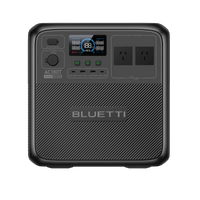












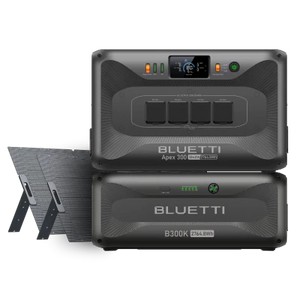





















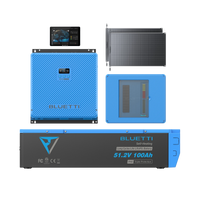





















![[Phased Out] BLUETTI B80P Expansion Battery | 806Wh](http://www.bluettipower.com.au/cdn/shop/files/202310025B80P_2000-2000px_4_4caa0c1c-4dab-4272-9e9b-2b7507e5bd81.jpg?v=1713777870&width=200)
![[Phased Out] BLUETTI B210P Expansion Battery | 2,150Wh](http://www.bluettipower.com.au/cdn/shop/files/2_08cf9ef3-03a4-4489-b641-d3edb8094896.webp?v=1716016566&width=200)
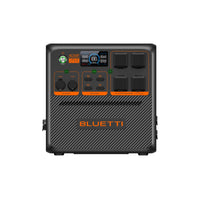


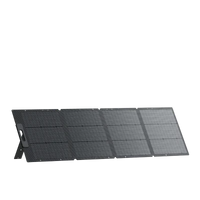


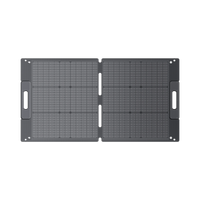





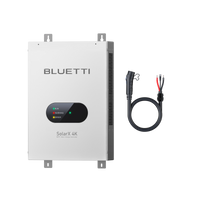






















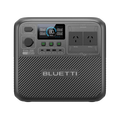

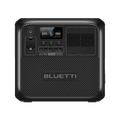






























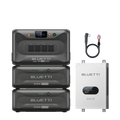



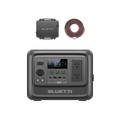





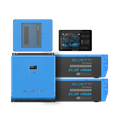



































![[Phased Out] BLUETTI B80P Expansion Battery | 806Wh](http://www.bluettipower.com.au/cdn/shop/files/202310025B80P_2000-2000px_4_4caa0c1c-4dab-4272-9e9b-2b7507e5bd81.jpg?v=1713777870&width=120)
![[Phased Out] BLUETTI B210P Expansion Battery | 2,150Wh](http://www.bluettipower.com.au/cdn/shop/files/2_08cf9ef3-03a4-4489-b641-d3edb8094896.webp?v=1716016566&width=120)


















